Upon
debriefing, as was normal after all trips; I encountered a Canadian tail
gunner from another Lancaster that had used this airport because of trouble
encountered over the target. It seems while on their final bombing run
they noticed another bomber, a Halifax, attempting to evade a German night
fighter. The Halifax had taken violent evasive action, and in one of it
swings it came up under the tail of the Lancaster, and its nose came into
contact with the underside of the tail gunner's turret. The gunner reported
that when he had last seen the Halifax, it was out of control and in a
downward spiral. The German fighter then attacked the Lancaster and they
were jolted back into reality as they fought for their own survival.
When talking to this crew, their concern was not of their own safety or
that they had arrived safely at this base, but what had happened to the
crew of the Halifax? They prayed that this Halifax crew had been able to
recover and land safely. This feeling seemed to be prevalent with all aircrews,
and I, myself, would experience these same feelings as my career as a gunner
continued.
When daylight came, we two gunners went out to look at his aircraft.
There certainly was a huge dent under the tail gunner's turret. I jokingly
remarked to him that when he saw the Halifax coming up and hitting his
Lancaster, that he must have been quick to pull his feet up.
Our aircraft, "V" for Vulture, was checked out, and no malfunction was
found, so we returned to our home base.
"V" had now completed some ninety-four trips. The previous crew returned
from leave, and were now advised that the number of trips required to complete
a tour was upped from thirty to thirty-six. We were told this was
done so as not to have to train new aircrew, as it was evident that the
war was coming to a close. This crew then again donned their flying
suits and not only completed the required number of trips, but brought
back "V" for Vulture safely with a hundred trips under its belt. The squadron
celebrated the event with a gala party. Throughout the history of the Lancaster
aircraft, there were only a score of them that passed the 100 trip mark,
and so it was quite an occasion.
.
"V" for Vulture went out on it's 101st. trip. It did not return.
I remember vividly the handsome young New Zealander who was the tail gunner
on this ill-fated trip.
Some
six months, and many more adventures later, I found myself in Bournemoth
England awaiting repatriation back to Canada. I made an acquaintance of
another Canadian gunner who was also awaiting the trip home to Canada.
It turned out that he was the tail gunner of the ill-fated Halifax that
had collided with the Lancaster while trying to evade the German night
fighter. He told me that the Halifax had not been badly damaged, but the
Plexiglas nose section had been sheered off, and the resulting rush of
air blew the crew back to the rear of the aircraft. This air stream was
so violent and very cold, as it was not unusual to have temperatures of
20 below at that altitude. As they were near the Russian lines, the pilot
decided to fly over to the Russian held territory, and then the crew would
bail out of the aircraft. When they reached Russian Territory, the crew
jumped, but the pilot, because of the intense wind and cold, was virtually
frozen in his seat. He could not get himself out of the pilot's seat and
so was forced to land the aircraft. All of the crew survived and were later
repatriated to England via the well-known Murmansk Route. Russian hospitality
was not the best, and seven months passed before they were returned to
England. All of the Halifax crew was extremely concerned about what happened
to the Lancaster that they had collided with, and it was the topic of many
conversations they had while in Russia. They were quite elated when I was
able to confirm to them that the crew of the Lancaster was safe, with no
injuries, and that I had talked to them.
When
I recall this encounter I am somewhat amazed that for a time I was the
only person who was aware of the fate of these two bomber crews who met
by "accident". I felt pleased that I was able at least inform one crew
of what turned out to be a happy ending.
All
of the Gunners involved in this incident were Canadians, It is possible
that those Gunners may remember the incident.
"Press
on Regardless..."
Dear
Members and Friends of Halifax 57 Rescue (Canada),
Please
find enclosed the latest developments in our historic quest to find RCAF
Halifax LW170.
I hope
to have even more exciting news later this month after my trips to Whitehall,
London to begin technical discussions with the Royal Navy.
Registered
CHARITY NUMBER 84586 5740 RR0001
Progress
Report Number 5
Charitable
Status and Royal Navy Help
On
the 60th Anniversary of this date in early 1945 our Halifax LW170 was with
RAF 518 Met. Squadron at Tiree, Scotland. She had survived her combat days
when flown by Canadians and an American in RCAF 424 Squadron. Now she was
providing less exciting results but all important weather data to the Allied
forces as they moved forward into fortress Europe and the drive to Victory.
Every
day I wake up and think of the sacrifices and excellence of those bomber
crews and airborne warriors who fought for our freedom. I ask myself what
can I do to make this project move forward faster for this is the best
year in all the years ahead to do this project. I would like to report
some vital and essential advances in our quest to locate and recover LW170.
Time is of the essence for myself today, in more ways than one, so I will
shorten this Progress Reprt Number 5 with the promise of the issue of Number
6 as soon as possible, hopefully in February.
I am
very pleased to announce that "Halifax 57 Rescue (Canada)" has received
status as a Registered Charity from Canada Customs and Revenue Agency.
This all important status will enable and ensure that we can move forward
with our fund raising for the expensive activities of this historic project
to recover LW170. This means that, along with the ability to issue tax
deductible receipts to each and every donation for the project from our
members and supporters, we can apply to all foundations and corporations
for the financial support we need for the location and recovery of our
"Hallie". Our Registered Charity Status is effective from November 4, 2004
and our Charity business number is 84586 5740 RR0001. To all
of you who donated funds to our cause in 2004 we thank you and you
will receive your tax receipts in due course and on time.
The
day of Jan. 17, 2005 was a very good day as not only did we receive
our Charitable status, with all of the huge implications for fund raising
and success of our project, we also received a letter of good news from
the Ministry of Defence of the United Kingdom with a positive response
to my proposal for assistance from the Royal Navy to locate LW170. Halifax
LW170 is sunk in an area which has been surveyed by the Royal Navy and
they have agreed to meet with yours truly in early February at Whitehall,
London to begin assistance with our efforts to pinpoint LW170. I am very
pleased with their response to my request and will be able to report back
to you in mid Feb.of the possibilities and progress for the Halifax Project
after our meeting at Whitehall with the Naval staff.
As
our diligence and determination is now beginning to bear fruit in these
concrete ways I must tell you that I will be relying on your support and
donations to keep us, "Halifax 57 Rescue (Canada)", moving forward to our
goal of LW170. I have paid some of our legal costs incurred for our Charitable
status application from your kind donations and support while paying certain
costs from my own pockets. Now the funds are low and we must pay off the
remainder of our lawyers bills and hopefully replenish our account for
the activities ahead to raise the all important funds for our Halifax project.
As
Project Manager I would like all those people who expressed interest in
donating to our cause, IF we could get Charitable status and issue tax
receipts, to please come forward NOW and send your cheques/checks to "Halifax
57 Rescue (Canada)". We must pay off these legal fees ( which were $1750
total ) and move forward to our goal. You can see the potential here with
all the latest positive steps taken, with much effort and some personal
expense. I am trusting in your sincerity and enthusiasm so will be waiting
for your tangible support to keep the ball rolling towards the target,
LW170.
She
is out there waiting for us. For her and her crews, indeed all those gallant
crews who paid so dearly in Victory and for all our freedoms, I ask you
now to please step up and support this historic cause.
Standby
for further reports soon.
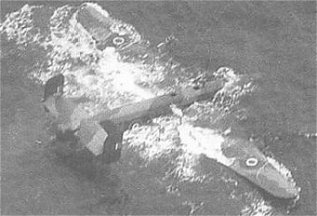
This
is the aircraft Karl is going to raise. She took 6 hours to sink so should
be in good condition. Just covered in barnacles like the rest of us.
Sincerely,
Karl
Kjarsgaard
Project
manager
Suite
212-2980 Colonial Road
Sarsfield,
Ontario
K0A
3E0
Halifax
57 Rescue (Canada)
phone
613 835 1748
email
57rescuecanada@rogers.com
website
www.57rescuecanada.com
BOB
HENDERSON, proprietor of HOME FRONT ARCHIVES & MUSEUM Regina, SK Canada
John
– further to my article on Canadian PoW W. Vanzant in September 2004 issue
of Short Bursts. A few more details of one of the events described.
The
most tragic event occurred on April 30 1944, while F/Sgt. Vanzant rested
on his bunk at Stalag 1VB. Around 2:00 pm on that date, witnesses observed
a low-flying JU-88 from nearby Lonnewitz night-fighter training airfield
approaching. This was a stunt often performed by “Hot Shot” Luftwaffe pilots
in those days, in an apparent attempt to impress the PoW held in Muehlberg
PoW camp.
It
struck the camp perimeter fence and electrical wires (neither more than
fifteen feet height) between the sentry box and the chapel, roaring across
the PoW compound where it struck Canadian W/O2 Herbert David Mallory from
behind, killing him. (He was from
Woodstock,
NB, and was 22 years old). Also struck was Canadian F/Sgt. PoW #222744,
F/Sgt. W. W. Massie (R150556), who received a broken leg.
The
aircraft continued in the air, trailing fence wire, and barely missing
another guard tower. One occupant of the tower baled out, breaking his
thigh.
The
pilot apparently managed to land back at the airfield, where he was “dealt
with” by his Commander within an hour of the incident occurring. One can
expect that he was sent to the Russian Front, and probably did not survive
the war.
BOMBER
HIT 3 TIMES IN 10 SECONDS
From
Mountain Viewpoint Newsletter of RCAF Station, Mountain View, Ont.
Vol
2 – No. 25, August 1945
The
big Lancaster broke through the clouds at 2000 feet. Below them was Le
Havre, and below them too was an enemy gun position. The anti-aircraft
batteries must have been as thick a flies around honey because in a matter
of seconds they were hit three times! The first got them in the bomb bay
and set off the target indicators and fired a header tank.
Immediately
the aircraft filed with smoke and flames. The second tore off ten feet
of the starboard wing and the third went right through the same wing between
the fuel tanks and tore a hole the size of a washtub.
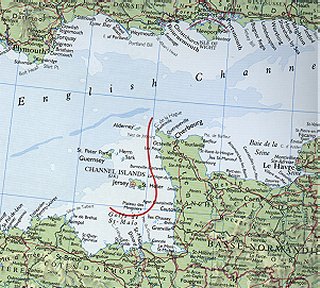 The
Skipper opened a window and ordered the escape hatch jettisoned. He feathered
the two starboard propellers, dumped the bomb load and ordered the crew
to abandon the aircraft while he strove to maintain enough altitude to
allow them to jump safely. The Bombardier and Navigator managed to revive
the two knocked out airmen and see them safely over the side. The flight
Engineer, the only RAF member of the crew, in his excitement pulled his
‘chute’ and tangled it I the Pilot’s controls. They helped him gather it
up in his arms and assisted him to the escape hatch. But it was jammed
half way. They pulled and pushed and finally, door, Engineer, ‘chute’ and
all dropped from sight. Then they bailed out.
The
Skipper opened a window and ordered the escape hatch jettisoned. He feathered
the two starboard propellers, dumped the bomb load and ordered the crew
to abandon the aircraft while he strove to maintain enough altitude to
allow them to jump safely. The Bombardier and Navigator managed to revive
the two knocked out airmen and see them safely over the side. The flight
Engineer, the only RAF member of the crew, in his excitement pulled his
‘chute’ and tangled it I the Pilot’s controls. They helped him gather it
up in his arms and assisted him to the escape hatch. But it was jammed
half way. They pulled and pushed and finally, door, Engineer, ‘chute’ and
all dropped from sight. Then they bailed out.
By
the time the Skipper hit the silk the aircraft was down to 600 feet and
his ‘cute’ just opened as he hit the ground and he landed on one shoulder
bruising it badly. That was the only injury suffered by any of them! They
all landed safely in friendly territory except the tail gunner who was
made prisoner by the Germans.
(Remember
that this was written in 1945)
The
Bomb Aimer of this fortunate crew and now a trainee on the Long Armament
Course here at Mountain View, F/L Reginald “Reg” Swartz was awarded
a bar to his DFC for the above exploit. When asked how he was decorated
the first time , he replied, “Oh, the usual thing – devotion to duty –
and gallantry in action – that sort of stuff.”
Reg,
who in addition to the DFC and Bar has the ’39-43 Star, the CVSM and Maple
Leaf, the gold Pathfinder Squadron Eagle, the Ops Wing and Bar for two
tours, and the Caterpillar membership insignia for hitting the silk, hails
from West Lome, Ont., and before the war was an employee of Simpsons in
Toronto. He enlisted in the RCAF in March 1942 and received his wing
and commission in May 1943. He was shipped overseas immediately and joined
405 Pathfinder Squadron.
In
his two tours Reg put in about 250 hours of tough flying – usually “Master
of Ceremonies” jobs. These consisted of leading the way and marking the
target for the late arrivals.
Except
for one early change the same crew stuck together through it all.
Pilot
– W/C Howie Morrison, DSO, DFC, from Lauder, Manitoba, and now at AFHQ
Ottawa
The
Navigator F/L Mickey Queale, DFC and Bar, from Victoria B.C., now also
stationed at AFHQ.
Wireless
operator P/O Red D’Arcy from St. John’s N.B. and now at Moncton.
The
only one not decorated, Red proves that it’s not best to sass your O.C.
P/O Benny Benabo, DFM, the Mid-Upper Gunner, is back overseas.
The
Tail GunnerP/O Bill Kubiak, DFC, from Montreal is now at No. 1 AC
Trenton.
Flight
Engineer, WO1 Roy Matcham. DFC, RAF, whose home is Southhampton, England,
is now in Ferry Command at Dorval.
The
Bomb Aimer and second Navigator, of course was Reg.
In
the total flying done by this crew the incident over Le Havre was
the only one out of the ordinary, although they had many hot receptions,
especially over Berlin which they visited nine times. They were also over
Stuttgart four times and Frankfurt three times.
While
talking of England, Reg said that the Canadian girls were, on the average,
better looking but not quite as friendly as the girls in England. He admired
their fortitude and courage under the buzz bomb attacks and raved about
the old English institution, the “Pub”. All in all, he really enjoyed his
stay.
(Ed.
The tenor of this article written in 1945, reflects the attitude of service
men and women who had lived through five years of war.)
CORRESPONDENCE
Charley
Yule,
I have
just been talking to Ryan Fitzgerald who is working with Don Young, the
Producer of the [BCATP documentary]. These people represent 'FRANTIC
FILMS, a company who have produced other documentaries of re-enactment's
of Historic Events.
They
are still interviewing ex aircrew personnel (mainly 'Gunners') which will
be included in the finished film. All is going well with finishing
touches being added, upgraded or finalized. The Title, which was
originally announced as, "Reach for the Sky" may be changed before being
broadcast on the History Channel. There are 4 - 1 hour segments,
and it is not certain if they will be broadcast on consecutive nights,
weeks, or just what the format will be. This, of course, will be
ascertained prior to the showing of the first segment, and one way or another
this information will, hopefully, be conveyed to as many of our readers
as possible, through the March and April issues of 'SHORT BURSTS'.
The
TV History Channel has obtained the 'rights' to broadcast the Series,
with the first segment presently scheduled for APRIL 15th, 2005.
Watch your local newspapers or TV Guides for confirmation of dates and
times.
We
have also been advised that, following the final broadcast of the Series,
the complete tape will be made available for sale (commercial free) to
anyone interested in purchasing them. You will hear more about this
as time goes along. For those who may wish to tape the Series as
they are shown, this will necessitate including all commercials unless
you edit them 'out' as you go along.
For
further information on this film production see: www.hillmanweb.com/bomberboys
John:
I am
still working on my book about the DC-3. Have had quite a lot of assistance
but am still doing research.
One
of the famous uses for the DC-3 was the flights out of India " over the
hump" into China where I believe they supplied some of the Chinese armies
and Gen. Claire Chenault and his Flying Tigers. I can find no information
that 435/436 Squadrons did any of this work.
Was
this done by American fliers? I know DC-3s were used as there was a special
model with extra fuel capacity and superchargers (because of the height
over the Himalayas).
Do
you know anything about this John? or where I could get information ?
All the best, John.
Don Butt.
dbutt25@juno.com
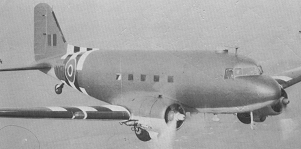
DC3 painted to represent KE
374, the aircraft of 271 Squadron
Piloted at Arnhem on September
19, 1944 by F/L David Lord, DFC,
who was posthumously awarded
the Victoria Cross.
Dear
John and Doreen Moyles - I enjoyed very much reading some of the stories
written about and by old RCAF and RAF Air Gunners. I am a Scotsman
living in China and I would like you all to know that the courage of the
Canadian forces in WW2 will never be forgotten and always appreciated.
Thank you and God Bless –
Ian
Black
caravelle72000@yahoo.co.uk
Re:
SKIPTON ON SWALE
Dear
sirs, l am researching a book about RCAF Skipton on Swale, England, and
its squadrons: 420 432 433 and 424. I am interested in tracing members
of these squadrons with a view to sharing their experiences. I would be
most grateful for any information on this subject. Kind regards, Michael
L. Pepe
Hello
John, Thank you so much for your help. I was born and raised at Skipton
so the base is of special interest to me. I must say that your site is
about the best l’ve seen and long may it continue. Before moving to my
present address, l lived in an ex-RAF house at Middleton St George, now
Teesside Airport and in '85 a group of RCAF vets came over for the anniversary.
I was
privileged to meet many of them but did not record their stories. What
an opportunity missed! My home address is;
Michael Pepe
8 West Road
Filey
North Yorkshire
YO14 9LP
England
MICKPEPE@aol.com
The
town you will have visited would most probably been Harrogate as it was
very popular with the boys. Thanks again for your time and l look forward
to hearing from you soon.
Best
wishes, Michael.
(Ed.
Michael’s reference to Harrogate refers to
my
Skipton experience I sent him. I will share it with you.)
I was
on 422 Squadron (Sunderlands) South Wales, but I had an old school friend,
Bud Duller, who was an aero engine mechanic at Skipton. One leave I went
up to Skipton to visit Bud. He told me that the chap in the next bunk was
away and I could sleep there. Neither one of us stopped to think of the
fact that I was a Flying Officer (wireless air gunner) and Bud, an LAC,
in an airman's barracks.
However,
I was accepted. Bud had to work on the flight line but we planned to go
into Harrogate that evening (I think that was the town). Bud asked me to
press his best blues so we could get an early start.
The
barracks was deserted. I set up their ironing board and started pressing
Bud's uniform. The door opened and in walked an RAF Group Captain, a Flight
looey, and a Warrant Officer. I presumed they were giving the Old Boy a
tour. When they saw a young Flying Officer performing batman duties in
an airman' barracks, the dirt hit the fan.
G/C,
"What are you doing?"
I came
to attention with hot iron at the present, and sort of cocky inferring,
'isn't it obvious', said, "Pressing my friend's uniform, Sir."
I had
never seen a man turn purple before. He turned to the F/L and snapped,
"take this man's name and number." The F/L turned to the W/O and repeated
the command. As they walked away I think I heard the words, 'damn Colonials'.
Bud
got off work at five and we went into Harrogate for a great evening. We
were just a couple of old school buddies from home. Rank meant nothing.
Neither
one of us heard further about this incident.
Editors
Report
It
is with great sadness that we report the passing of Gene Hackett,
the wife and life partner of Ted Hackett, Sherwood Park, Alberta.
Gene was very active in the Ex-Air Gunner’s Association, attending and
helping organize our reunions, and supporting Ted in his involvement with
the Association. Our condolences to Ted and family.
I wish
to apologize to Members who receive the CATP Museum Newsletter, CONTACT
as we have used two of the articles from the last Issue. However, I justify
this by assuming that, at our age, we will not remember what we read a
month previous.
Don’t
miss Michael Pepe’s request for information on Skipton-on-Swale. Many of
our Members served at this base and Michael would appreciate hearing from
you. I have mailed Michael the account of Skipton from our COMMEMORATIVE
ISSUE 1983-1993 pg. 146 ff.
Don’t
forget to pass the hat for our benefactor, the CATP Museum, at your next
luncheon.
Please
take time to send us material for the News Letter.
Until
April, “April showers bring May flowers”, sounds good doesn’t it, keep
well.
John
& Doreene Moyles Editors.
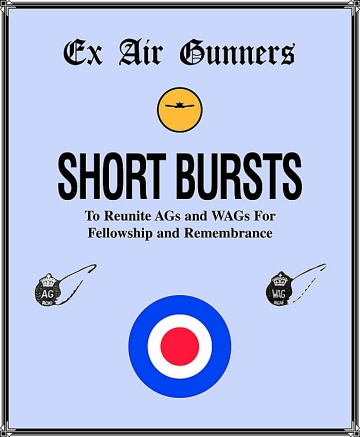

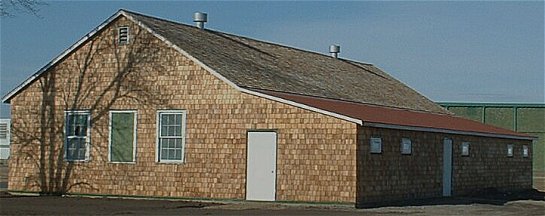


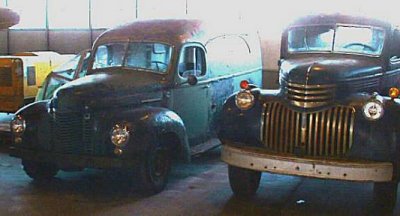
![]()
![]()
![]()
![]()
